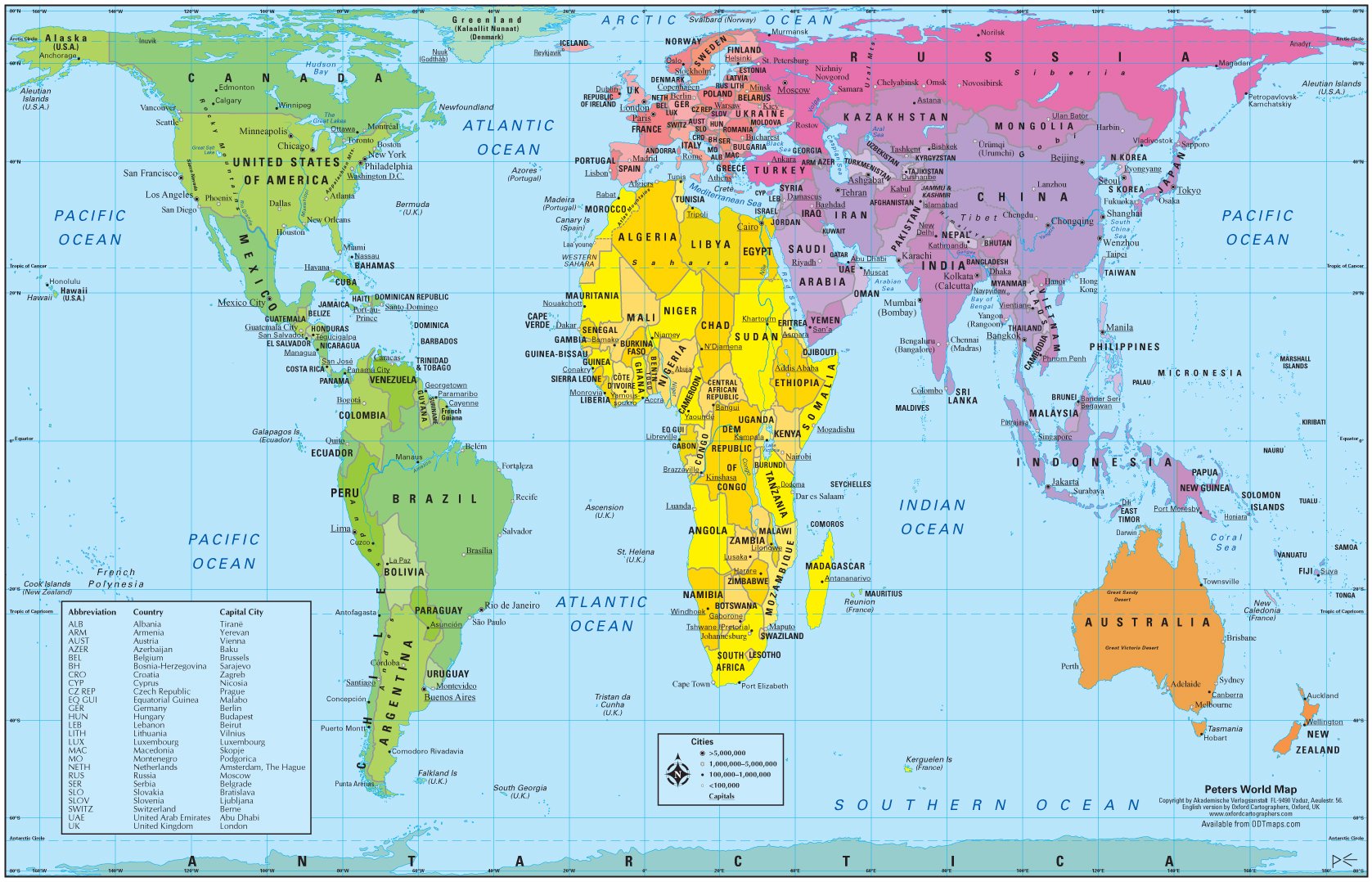I have already discussed on this blog how I love the idea of materials-light teaching and how I am experimenting with an unplugged approach. So it comes as no surprise that last week I decided to unplug one of my intermediate-level lessons to see where it would go. The result was amazing to me.
Some background information before I start: this happened while I was teaching a mini-class of four adult students who have been studying together for about seven months now, meeting once a week for a two-hour lesson. Since here in Italy the summer holidays are getting closer, I decided to centre the lesson on the topic of travel and holidays. I selected and adapted an activity from Teaching Unplugged that included using a world map as stimulus for conversation. So I took down the only decent world map I found and, after greeting the students and asking them about their weekend (a warm-up I generally use with all my Monday students), I put it at the centre of the classroom.
What happened next made me believe a totally unplugged course can be possible and is in fact the best solution – at least with some learners.
I didn’t have to say anything. The students started looking at the map and one of them, a primary school teacher, immediately noticed it was a Peters world map. She asked me if I knew the difference with other world maps, so I said that I did but asked her to explain it to the rest of the students. She went on to give details about how, when and why Dr. Arno Peters decided to create this controversial map, what it stands for and so on.
Without any prompt whatsoever, the other students started asking questions and getting involved in the conversation on what’s the best way to represent the world on a flat map. I sat on a chair, listening, expressing my opinion when relevant and taking notes of what the students were saying.
After a while (by this time all the four students were standing around the map) the discussion shifted to Brazil. One of the four students’ mother is from Brazil, so she started giving information about her mother’s birthplace, her memories of going there to visit the family and her hopes for the future. Again spontaneously, the other students started asking questions and commenting on what she was saying.
When I felt the conversation was dying out, I reviewed my notes and started putting vocabulary and some sentences on the board, referring back to what people were saying when I herd that specific phrase or sentence. We improved the structure of some sentences, expanded vocabulary on certain topics and even ended up talking about and practising the difference between used to + infinitive and be/get used to + gerund (a grammar point that was on the syllabus but that I had always avoided before as I deemed it too confusing for this group of learners).
This of course was nothing I had planned. My plan was to create imaginary trips around the world, and get students to write a postcard from these places (which we briefly did for the second part of the lesson). Yet it felt like the best lesson ever, with students truly interacting and interesting language points coming up as they were speaking.
Of course this was by no means a perfect lesson. If I could go back I would probably push the boundaries even further and completely abandon my planned lesson to follow the flow of the conversation. I am still a very “raw” dogme teacher and still sometimes feel uncomfortable without the security of a lesson plan or of an activity that I have strong control over. But this lesson definitely opened up my mind to the possibility and beauty of some anarchy in the classroom.
Comments are closed.

Inspiring! I’m too new in this field to feel confident enough to do an entire Dogme lesson. So far I’ve only been able to let a small chunk of a lesson go in a Dogme direction. However, a full Dogme lesson is one of my goals as I gain more experience. Congratulations, well done and thank you for sharing, Giulia!
I’m not an expert, but with Dogme I’d say: experiment! You’ll see how your students reach and adjust your lessons consequently. The results can be amazing. Please write something when you try a full lesson, I’ll be happy to read your experience.
I love this. I often get groups of students to plan imaginary round-the-world trips together, to countries where they can practise their English. It ends up bringing up a mix of predictable and unpredictable ideas. I am stealing your postcard writing activity! Lovely. Cheers for sharing this.
Thanks Marc, but I have to say the postcard activity was not my idea, I got it from Teaching Unplugged. 🙂
Really? I can’t remember it. I shall have to read it again!
The activity on the book is called ‘Destination Unknown’